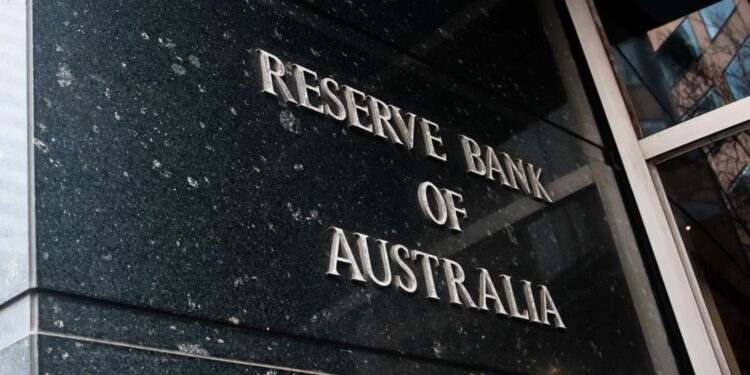In a move that surprised experts and analysts alike, the Reserve Bank of Australia (RBA) recently announced its decision to maintain the interest rate at 4.35%. This decision marks a departure from expectations of a rate cut, as the RBA faces mounting pressure to stimulate the economy amidst global uncertainties. With this move, the central bank aims to strike a delicate balance between supporting economic growth and managing inflationary pressures.
Understanding the Role of the Reserve Bank of Australia (RBA)
To fully comprehend the factors influencing the RBA’s decision, it’s essential to understand the role of the central bank. The RBA is responsible for formulating and implementing monetary policy in Australia, with its primary objective being the maintenance of price stability and the promotion of sustainable economic growth. One of the key tools at the RBA’s disposal is the interest rate, which it adjusts based on various economic indicators and factors.
Factors Influencing the RBA’s Decision
The RBA’s decision to maintain the interest rate at 4.35% is influenced by a combination of domestic and global factors. Firstly, the robustness of the Australian economy plays a significant role. Despite the ongoing trade tensions and geopolitical uncertainties, the Australian economy has shown resilience. This resilience can be attributed to factors such as strong consumption, a relatively low unemployment rate, and a healthy housing market. The RBA recognizes these positive developments and aims to provide stability by keeping interest rates steady.
Secondly, inflationary pressures are another crucial factor considered by the RBA. Inflation refers to the general increase in prices over time, and the central bank aims to keep inflation within a target range of 2-3%. By maintaining the interest rate, the RBA aims to manage inflationary pressures and prevent the economy from overheating. However, it is worth noting that the RBA continues to monitor inflation closely and stands ready to adjust interest rates if necessary.
Lastly, the RBA takes into account the state of the global economy when making its interest rate decisions. The ongoing trade tensions between major economies and geopolitical uncertainties have created a challenging global environment. These factors can impact Australia’s export-oriented industries and overall economic performance. By maintaining the interest rate, the RBA aims to provide stability and support to the Australian economy amidst these global headwinds.
Economic Indicators Considered by the RBA
The RBA closely monitors a range of economic indicators to assess the health of the Australian economy and make informed decisions regarding interest rates. These indicators provide valuable insights into the economic conditions and help the central bank gauge the appropriate course of action.
One of the key indicators considered by the RBA is the Gross Domestic Product (GDP), which measures the total value of goods and services produced within the country. A strong GDP growth indicates a healthy economy and may influence the RBA’s decision to maintain or adjust interest rates. Additionally, the RBA looks at indicators such as consumer spending, business investment, and government expenditure to assess economic activity and potential areas of concern.

Inflation and Its Impact on Interest Rates
Inflation is a critical consideration for the RBA when setting interest rates. The central bank aims to keep inflation within a target range to ensure price stability and support sustainable economic growth. Inflation can be influenced by various factors such as changes in consumer demand, supply shocks, and changes in global commodity prices.
When inflation is low, the RBA may consider cutting interest rates to stimulate spending and investment, thereby boosting economic activity. On the other hand, if inflation is rising above the target range, the RBA may opt to increase interest rates to curb excessive spending and prevent the economy from overheating. The decision to maintain the interest rate at 4.35% suggests that the RBA is currently comfortable with the level of inflation and believes it is within an acceptable range.
Employment Data and Its Significance for the RBA’s Decision
The labor market plays a crucial role in the RBA’s decision-making process. Low unemployment rates indicate a healthy job market and can contribute to increased consumer spending and economic growth. The RBA monitors employment data, including the unemployment rate and the number of new jobs created, to assess the overall health of the labor market.
Currently, Australia’s labor market remains strong, with unemployment figures at record lows. This positive trend indicates a robust job market and suggests that the economy has the potential for continued growth. The RBA’s decision to maintain the interest rate reflects its confidence in the labor market and its positive impact on the overall economy.
Housing Market Conditions and Their Influence on Interest Rates
The state of the housing market is another factor considered by the RBA when determining interest rates. The housing market plays a significant role in the Australian economy, and fluctuations in house prices can have far-reaching effects.
A booming housing market can stimulate economic activity through increased construction, consumer spending, and wealth effects. Conversely, a downturn in the housing market can have adverse effects on consumer confidence and spending, potentially leading to an economic slowdown. The RBA closely monitors housing market conditions and takes them into account when making interest rate decisions.
Currently, the Australian housing market remains relatively stable, with modest price growth and low interest rates supporting demand. The RBA’s decision to maintain the interest rate at 4.35% reflects its assessment of the housing market’s resilience and its ability to contribute to economic growth.
Global Economic Factors Affecting the RBA’s Decision
The RBA does not operate in isolation but must consider the global economic landscape when making its interest rate decisions. Global factors, such as trade tensions, geopolitical uncertainties, and changes in global commodity prices, can have significant implications for the Australian economy.
Trade tensions between major economies, such as the ongoing dispute between the United States and China, can disrupt global supply chains and impact Australia’s export-oriented industries. Geopolitical uncertainties, such as Brexit and political instability in various regions, can also create economic headwinds. Furthermore, changes in global commodity prices, particularly those of key Australian exports such as iron ore and coal, can affect the country’s terms of trade and overall economic performance. Given these global uncertainties, the RBA’s decision to maintain the interest rate suggests a cautious approach to support the Australian economy while navigating challenging external conditions.
The RBA’s Communication and Transparency Regarding Interest Rate Decisions
The RBA strives to maintain transparency and communicate its interest rate decisions effectively. The central bank conducts regular meetings to assess economic conditions and determine the appropriate course of action. Following these meetings, the RBA releases a statement outlining the rationale behind its decision.
The RBA’s communication aims to provide clarity to financial markets, businesses, and the public. It helps stakeholders understand the central bank’s assessment of the economy and its outlook, fostering informed decision-making. Transparency in interest rate decisions allows market participants to adjust their strategies accordingly, contributing to overall economic stability.

Conclusion: Implications of the RBA’s Decision and Future Outlook
The RBA’s decision to maintain the interest rate at 4.35% reflects its confidence in the resilience of the Australian economy amidst global uncertainties. Factors such as a robust labor market, steady inflation, and positive housing market conditions have influenced the central bank’s decision.
However, the decision may have implications for sectors such as manufacturing and tourism, which could have benefited from a rate cut. Additionally, borrowers may miss out on potentially reduced mortgage repayments resulting from lower interest rates.
Looking ahead, the RBA faces risks and challenges, including ongoing global uncertainties, changing economic conditions, and the need to strike a balance between stimulating economic growth and managing inflation. The central bank will continue to monitor economic indicators and make informed decisions to support the Australian economy.
Overall, the RBA’s decision to maintain the interest rate at 4.35% underscores its commitment to achieving price stability and sustainable economic growth, while considering both domestic and global factors.



